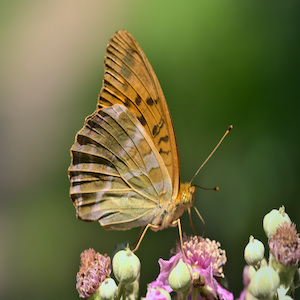The butterflies and burnets (Lepidoptera: Hesperiidea, Lycaenidae, Nymphalidae, Papilionidae, Pieridae, Zygaenidae) of the Nature Reserve Bosco della Fontana (Lombardy, Italy)

All claims expressed in this article are solely those of the authors and do not necessarily represent those of their affiliated organizations, or those of the publisher, the editors and the reviewers. Any product that may be evaluated in this article or claim that may be made by its manufacturer is not guaranteed or endorsed by the publisher.
Authors
Insects are declining at an alarming rate in many parts of Europe and this also applies to butterflies, one of the most well-studied groups of insects. They are popular with the public and are considered good biodiversity indicators. Bosco Fontana, an isolated protected area, which contains one of the best preserved lowland forests of northern Italy, is surrounded by a highly modified landscape and is known to host some important butterfly populations. To investigate the butterflies and burnets, a total of 22 standard surveys, lasting 25 minutes each, were carried out in four different habitat types of Bosco Fontana in the years 2020 and 2021. The surveys confirmed the presence of 36 species of butterflies and 3 species of burnets for the reserve. Statistical analysis revealed that the butterfly and burnet assemblages of the grasslands, ecotones and forests were distinct, but similar in the two study years (datasets available as supplementary information). Many nemoral species were confirmed for Bosco Fontana, with relict populations of Favonius quercus and Argynnis paphia present only in a few residual forests in the Po Plain. Five species typical of grasslands and other open habitats and belonging to the local species pool of the Po Plain in the province of Mantua, were never detected at Bosco Fontana in the study years. The ecological significance of their absence is discussed.
How to Cite

This work is licensed under a Creative Commons Attribution-NonCommercial 4.0 International License.
PAGEPress has chosen to apply the Creative Commons Attribution NonCommercial 4.0 International License (CC BY-NC 4.0) to all manuscripts to be published.










